At the end of World War I, many Armenian and international organizations, foreign missions, as well as individuals tried to locate those who had survived, rescue them from slavery, and restore their Armenian identity.
The present article aims to highlight the importance of the liberation mission after World War I, mainly concentrating on the life and activities of Ruben Heryan, a prominent activist who rescued many Armenian women and orphans after the war.
The main source of the research is Heryan’s personal archive found in the National Archives of the Republic of Armenia. Hundreds of personal and official letters, petitions, documents, photographs, and lists of names of orphans (those who were searched for and those who were rescued) illustrate the story of Heryan’s difficult and complicated activities. During his mission, Heryan did not have a permanent address. He informed about his temporary addresses either through Armenian daily newspapers,1 the church, or relatives. Among a great number of archival documents are the petition letters that have one basic plea to find and rescue a relative, mother, daughter, sister, son, and so forth. The petition letters are written in the regional dialects of Western Armenia; sometimes the letters are in Turkish with Armenian characters, sometimes in Arabic. The letters often take the form of small pieces of papers or cards2 on which the notorious destinies of the Armenian Genocide survivors are scratched with pencil.
Heryan was born in 1869 in Tokat (Evdokia). In 1883, after graduating from the national seminary of Tokat, he moved to Constantinople, then to New York, where he started his own business. While living in Constantinople, Heryan was a member of the Social Democrat Hunchakian Party; he later became a member of the Armenian Democratic Liberal Party. In New York, he supported the same party and was engaged in solving national issues, and became one of the founders of Krtasirats Miutyun (Educational Society).3
In 1914, when World War I began, Heryan was already accomplished enough in his business and enjoyed a good reputation among Armenian Americans. Soon after learning about the Armenian Genocide, he left everything behind and, together with the Armenian volunteers, moved to the Near East where he joined the Armenian Legion. In summer 1918, when the Armenian Legion volunteers were transferred to the war front of Palestine, Heryan was not sent because of his age. He was appointed as a guard of a hospital near Cairo. Although Heryan took care of wounded Armenian volunteers and French soldiers, it is apparent in his letters that he wished he had been younger—to join the legionnaires in support of the salvation of his people and homeland.4 This was his main reason to become one of the most dedicated figures who took every opportunity after the ceasefire to rescue Armenian women and children from Muslim slavery.
Heryan was a member of the Armenian Relief Committee of Mesopotamia (ARCM) headed by Archbishop Moushegh Seropian. The archbishop authorized Heryan to safely transfer Armenian survivors from Der Zor to Aleppo. When Heryan reached Der Zor, he understood that the transfer of Armenians was not that complicated, that it was much more difficult and important to rescue those Armenians who were being held captive in Muslim houses in the desert. Seropian agreed and asked his French commander in Adana to give Heryan permission to go to Der Zor and embark on the rescue mission. Heryan was working mostly in Gezireh, Shamatyeh, Khereyta, Terban, Hawija, Meyadine, Aboukemal, Jibour, and Shawee, which were located around Der Zor. “Der Zor and Liberation are synonymous words for me,” wrote another member of ARCM, Mardiros Kouyoumdjian. “In order to liberate 12 underage Armenian girls from the hands of a very influential chief of a tribe and deliver them to legitimate claimants, we had to pay a sum of 1800 gold only as a present, without taking into account the heavy expenditure we had to undergo for the success of this undertaking, which is so closely related to the future regeneration of Armenia.”5
Often, Armenian and international organizations had many issues between each other for political reasons, but mainly, each tried to find solutions by supporting various parties that did not see eye to eye. Nevertheless, Heryan was one of the unique figures who worked with almost all activists in order to carry out his mission. The result was what mattered to him. Heryan collaborated with the English and French military authorities, the Armenian General Benevolent Union (AGBU), the Armenian National Union, the Patriarchate of Constantinople, the representatives of the League of Nations, and the Near East Relief’s activists, among others.
The rescue of the Islamized Armenians from Muslim institutions was known as the “Mission of Salvation” or “Liberation Mission.” It was not easy to save Armenians who were adopted by or already married to Turks, Kurds, and Arabs, or who had converted to Islam. Sometimes their patrons did not have any will to send them back, hiding their identity and existence, erasing their traces within the Mesopotamian tribes, moving them from one place to another. Despite having precise information, sometimes the searches could take months and years, often without any result.6
The Armenian liberation and rescue groups were formed in spring 1918, headed by Egyptian Armenians. The first group, which was called “Armenian Expeditionary Rescue Group” and led by Levon Yotnakhparian, a soldier who had served in the Fourth Ottoman Army in Damascus, benefited from the support of famous Arab leader Emir Faysal (who struggled for the liberation of Syria from Turks) and the British General Staff. Following the armistice in the Hawran region, the group succeeded in pursuing its operations and transferring rescued Armenians to Dera’a or Damascus.7 When the Young Turk leaders fled Turkey on Nov. 1, 1918, it gave a new start to the rescue activities. In November 1918, the members of the Egyptian-Armenian National Relief Committee of AGBU, the Armenian National Union, and the United Orphan-caring Union formed a special committee. On Nov. 30, one of the committee organizers, Bishop Torkom, sent an instruction-program to the members of this newly created body, which became a cornerstone for their activities. Heryan was one of the members of this group.
A sample of the instruction-program is found in Heryan’s personal archive and consists of 15 points.8 The third and eighth points, particularly, deal with the rescue mission. The overall idea of these instructions was the following: “All Armenians whose names were changed and who were forcefully converted to Islam must be liberated and sent back, and if they are abducted by Muslims, everything should be done to save them.”9 In February 1919, the anti-Armenian sentiments in Aleppo, which resulted in the death of hundreds of Armenians, complicated the mission of the activists.10 The British authorities feared rousing the Islamic authorities of Syria against them; wishing to avoid trouble, they tried to postpone the rescue mission. In his letters, Heryan mentions the policy pursued by the English authorities.11 Nevertheless, realizing the seriousness and importance of the situation, he made every effort to preserve good relations with them. In any case, Heryan did not stop the rescue mission. After the French authorities assumed the Syrian mandate, Heryan was provided with numerous opportunities to carry out his work.12
It should be mentioned that the Treaty of Sèvres incorporated an article dealing with the rescue issue: Article 142 recognized that under the terrorism regime in Turkey, forced conversions to Islam were a widespread tactic during the period 1914-18 and required the empire to co-operate with the Mixed Commissions appointed by the League of Nations to search and rescue those people “in order to repair so far as possible the wrongs inflicted on individuals in the course of the massacres perpetrated in Turkey during the war.”
Heryan was about 50 years old when he came to the Middle East to join the rescue mission. His nickname was the “Young man with grey hair,” because of his grey hair as well as for his practical and cheerful character. Over several months he became “the spy of the Armenian orphans,” “the liberator,” and “the savior.” In 1919, the AGBU established a Rescue Fund to carry out “the vital project of the liberation of orphans who are lost or captured in the depth of the desert and at the same time to save the Armenian young girls from harems.”13 In April 1919, Heryan was given a task to search for Armenian women and children in Aleppo and Der Zor and their surroundings. Heryan is unique compared to other liberators, mainly for carrying out his mission in Der Zor—“the city of crime,” as he called it.
Heryan was too concerned by the lack of funds. He turned to Armenians to raise money to save as many Armenians as possible. According to Heryan, time was of the essence: The next day could be too late to save the kidnapped women and children. He needed 30,000 gold coins to rescue 500 women and orphans. To collect that money he was traveling from Der Zor to Constantinople, giving talks and lectures, and asking for financial support. From an article published in “Joghovrdy Dzayny” (The Nation’s Voice) in 1919, we learn that he managed to raise only 11,000 gold coins,14 but the following pages of the newspaper are full of the names of those who donated to Heryan’s mission. It should be mentioned that not only did wealthy Armenians participate in this fundraising effort, but genocide survivors sometimes gave their last coins to the rescuers. For example, in 1919, “Joghovrdy Dzayny” published an article that mentions two women survivors who both escaped from Der Zor and gave their last coin for the rescue mission headed by Heryan.15
On Sept. 6, 1919, “Hay Dzayn” (The Armenian Voice), printed in Adana, noted: “The great Desert Man, the incredible Ruben Heryan…it has been already six months that forgetting about all else, he has thrown himself with selfless enthusiasm into the slaughterhouse to collect the remaining Armenian fragments. The leaders of Ashirs [Kurdish tribes] already recognize him as the Mufettish el-Ermen [the Investigator of the Armenians]; it’s impossible without bribery, there is little money, but he seizes any opportunity to save the Armenian captives.”16
On the same day, Heryan wrote a letter17 to his relative and good friend Metaks18 from Adana describing his poor health, but at the same time noting his energy and enthusiasm to continue helping those he rescued every day, and those who appealed to him to find their relatives. For him, the greatest reward was the happiness of the rescued Armenians.
It is particularly interesting to read his letter, dated July 19, 1919, from Der Zor, to Metaks. The letter indicates the problems he faced while moving the first caravan of 320 people to Aleppo and, afterwards, with the help of keleks (rafts) moving 350 orphans to Baghdad; planning to go back to villages and taking the orphans back with him, as well as buying many Armenian women from their captors and searching for those abducted; and, most importantly, because of threats made by the Arabs, convincing the surviving Armenians to be rescued. He also wrote about the main financial problems he had, and about his own savings, which he had depleted to fund his efforts. “My heart bleeds when I think of my financial ruin; I have grown very old; and I cannot reach my goal,” he wrote. “Not only is there no money, but there are no people either.” In the same letter, he wrote about those national activists for whom the liberation of the orphans and women was not a major issue, and how they were therefore busy with other work. He even referred to the members of the “Armenian National Delegation” who participated in the Paris peace conference as “patriots in word.” According to Heryan, the most urgent issue of the day was the rescue mission. “Could it be that I’m stupid, or is it that ‘the patriots of the word’ are clever? Either way, I cannot work against my own principles. The orphans will become the seed of tomorrow’s Armenia; each additional rescued Armenian is a gain; they are the fragments of my heart. When wandering through the deserts, there, in the sun, the white sparkling skulls and bones are crying out loud, ‘Set our orphans free’; and who can be indifferent after seeing all that? … I will work until I die.”19
The cooperation of Heryan with the most remarkable activist of the rescue mission, Misak Melconyan, the adopted son of Karen Jeppe, the representative of the League of Nations in the Near East, was of utmost importance. Melconyan worked both with Armenian and Arab partners, which greatly facilitated the rescue operations. He formed groups of horsemen, who under his command sought and rescued Armenian orphans and women from the tents of the Bedouins in the desert. Sometimes, these groups crossed over the border to the Turkish side and set free the women and children abducted by Turks and Kurds.20 The survivors were stationed in Aleppo, in the gardens called Sheik Daha, located in the northern part of the city, on the bank of the Queiq River. Now one of the most tangled and crowded suburbs, it was then rather far from the city. The tents were shelters for the orphans, refugees, and widows who had fled Turkey or escaped from the Bedouins. All of the survivors were provided with food, medical care, and clothes; their identities were checked, and their names were sent to newspapers, churches, and Armenian communities, in an effort to locate their relatives. There were many people from the city who came to find their siblings among the newcomers or to find information about the fate of their relatives.21
In some cases, rescued Armenian boys would not abandon Heryan and tried to help him in his mission. They had the experience of living among Arabs, and knew the locations of the adopted Armenians. There were also groups of youth who would ask Heryan’s advice and permission to participate in the rescue operations, or to carry out a separate one. For example, on Feb. 5, 1920, Heryan received a letter from a group of Tadem (Kharpert) youth who asked Heryan to teach them how to rescue Armenian women and children in the territories of Urfa and Mardin.22
Heryan participated not only in the rescue of women and children, but also in their settlement and rehabilitation. The long years of abduction, and the physical and sexual abuse they had endured, caused much physical and psychological pain to the victims. They needed care before returning to society. One of the first organizations to cooperate with Heryan to this end was the “Halepi Hayuhyats Miutyun” (Union of Armenian Women of Aleppo). The organization established a shelter for the abused Armenian women rescued from Muslim institutions.23 The Diocese of Aleppo provided one of its houses to shelter the survivors. Since June 1919, 45 Armenian women had found shelter there. In December of the same year, another shelter was founded in Damascus.24
One of the most complicated issues of that period was the fate of orphans and women who refused to recognize their Armenian identity, for one reason or another. Most of them had been torn from their Armenian roots at a very young age, and had forgotten their native language and nationality. But there were also orphans and women who despite remembering did not recognize their Armenian origin; “…the impact of horrors and the terror of the past was so high that sometimes they would prefer not to be rescued, but continue to live as concubines of 60-year-old blind men and feel safe in their tents,” Heryan said in an interview.25 He also mentioned the women and girls who had pled for their freedom, who were praying day and night to be rescued. Even in the harems, some of them never stopped being Christian Armenians; following their rescue, they always wore a cross around their necks and sang, “Aravot Luso.”
Typical to a psychologist, Heryan was treating each orphan and woman with special care. Sometimes he succeeded in his work, sometimes he failed, but he never succumbed to despair. In cases where the individual would not acknowledge their Armenian-ness, Heryan kept the rescued with him for five days; on the fifth day, he would ask them a question about their Armenian origin; their response would determine their future.
To solve the uncertainty around survivors’ identity, the Armenian Patriarch of Constantinople, Zaven Yeghiaian, together with Arakel Chakrian, an activist of the rescue mission, and the British powers established the “Neutral home” with a board comprised of Armenian, American, and Turkish members. The board examined the data on each survivor and determined his or her identity.26
Among Heryan’s concerns was the destiny of the Armenian girls saved from harems. Many times he called on Armenian volunteers to marry the orphans and build a family. On April 10, 1919, he wrote the following in his letter to Metaks: “I have started a powerful propaganda for marriage wherever I can. It has a good result—only in the Adana shelter-workshop with 350 widows and girls, we have 1, or 2 or sometimes 4 weddings in a day. Many of the Armenian volunteers from America are getting engaged to them…”27
It must be mentioned as well that within his archive, there are a number of letters addressed to Heryan that are micro-stories in their context, where some episodes of the Armenian Genocide are described. The letters are like puzzles containing fragments of lives and the conditions during and after the genocide. At the same time, they also contain details such as the locations, names, and physical descriptions of lost siblings, parents, sons, and daughters who were abducted; Heryan was asked to find them.
In October 1919, Heryan left for Constantinople and returned to Adana to raise money. He took the money raised by his friends and went back to Der Zor to continue his “vital desert mission.”28 But in December 1919, there was chaos in the desert: An Arab rebellion had erupted. They attacked Heryan’s house, pillaging and destroying it. Heryan was able to save the liberated women and children by hiding them in his Arab friend’s house. He was barely able to save himself from certain death. The Armenian church in Der Zor was also plundered and desecrated.29 Heryan went back to Aleppo, then Adana, where he raised more money, and returned to Der Zor to continue his mission.
From his letters, it is apparent that in 1920, while the Armenian organizations and benevolent unions were raising money for the already rescued Armenian orphans and women, Heryan never stopped raising money for the “Rescue Mission,” first in Europe, then in America. When he returned from America, he intended to marry an Armenian orphan and settle down in Mersin, Cilicia, but, unfortunately, on July 7, 1921, Heryan passed away from a heart attack in Cairo, Egypt, several days before his wedding ceremony.30
The mission to rescue thousands of Armenian women and children abducted by Turks, Kurds, Arabs, Chechens, Circassians, and others was one of the most crucial problems in the post-genocide period that required an urgent solution. The mission involved not only social organizations, but also private Armenians and sponsors who did everything in their power to carry out this work. One of the most devoted figures of this mission was an Armenian-American businessman, a volunteer of the Armenian Legion, Ruben Heryan, who dedicated his life and resources to the rescue operations until his death in 1921. The rescue mission did not stop after Heryan’s death; thousands of Armenians were rescued thereafter.
Fuente: http://armenianweekly.com/2016/05/31/ruben-heryan/

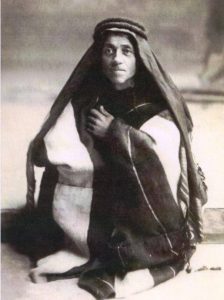
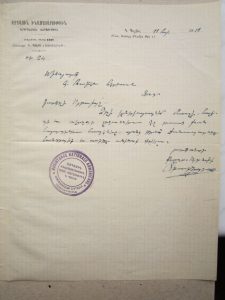
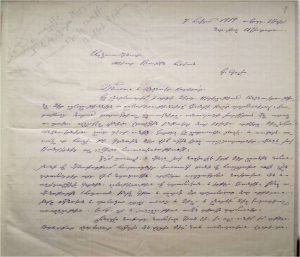
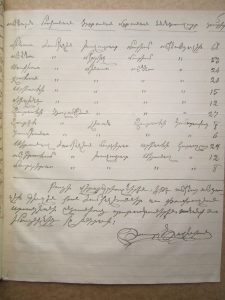
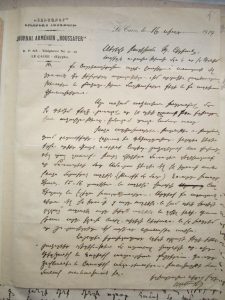

No hay comentarios:
Publicar un comentario